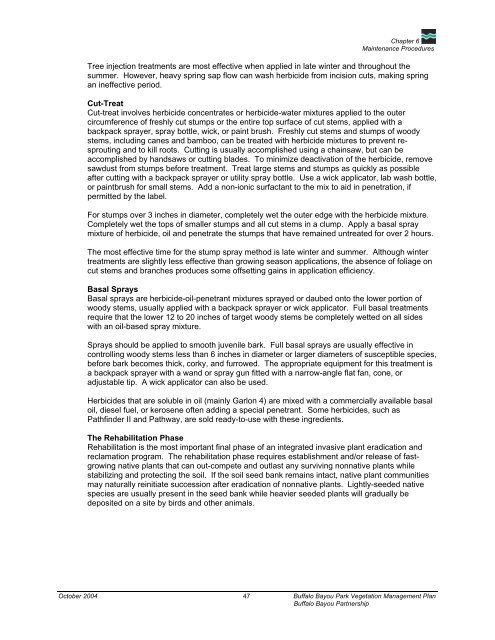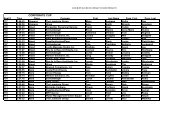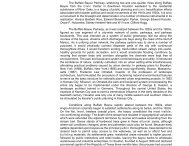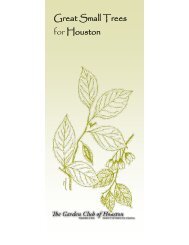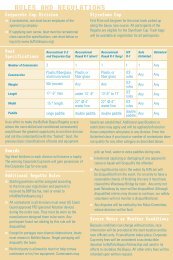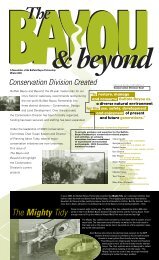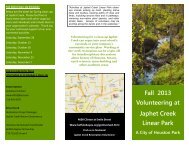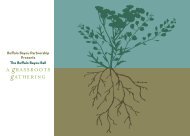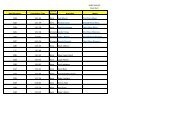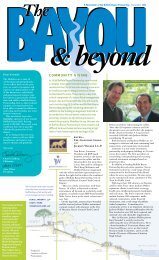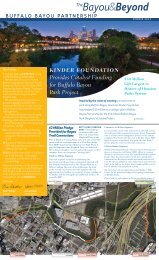Buffalo Bayou Park Vegetation Management Plan (PDF)
Buffalo Bayou Park Vegetation Management Plan (PDF)
Buffalo Bayou Park Vegetation Management Plan (PDF)
You also want an ePaper? Increase the reach of your titles
YUMPU automatically turns print PDFs into web optimized ePapers that Google loves.
Chapter 6Maintenance ProceduresTree injection treatments are most effective when applied in late winter and throughout thesummer. However, heavy spring sap flow can wash herbicide from incision cuts, making springan ineffective period.Cut-TreatCut-treat involves herbicide concentrates or herbicide-water mixtures applied to the outercircumference of freshly cut stumps or the entire top surface of cut stems, applied with abackpack sprayer, spray bottle, wick, or paint brush. Freshly cut stems and stumps of woodystems, including canes and bamboo, can be treated with herbicide mixtures to prevent resproutingand to kill roots. Cutting is usually accomplished using a chainsaw, but can beaccomplished by handsaws or cutting blades. To minimize deactivation of the herbicide, removesawdust from stumps before treatment. Treat large stems and stumps as quickly as possibleafter cutting with a backpack sprayer or utility spray bottle. Use a wick applicator, lab wash bottle,or paintbrush for small stems. Add a non-ionic surfactant to the mix to aid in penetration, ifpermitted by the label.For stumps over 3 inches in diameter, completely wet the outer edge with the herbicide mixture.Completely wet the tops of smaller stumps and all cut stems in a clump. Apply a basal spraymixture of herbicide, oil and penetrate the stumps that have remained untreated for over 2 hours.The most effective time for the stump spray method is late winter and summer. Although wintertreatments are slightly less effective than growing season applications, the absence of foliage oncut stems and branches produces some offsetting gains in application efficiency.Basal SpraysBasal sprays are herbicide-oil-penetrant mixtures sprayed or daubed onto the lower portion ofwoody stems, usually applied with a backpack sprayer or wick applicator. Full basal treatmentsrequire that the lower 12 to 20 inches of target woody stems be completely wetted on all sideswith an oil-based spray mixture.Sprays should be applied to smooth juvenile bark. Full basal sprays are usually effective incontrolling woody stems less than 6 inches in diameter or larger diameters of susceptible species,before bark becomes thick, corky, and furrowed. The appropriate equipment for this treatment isa backpack sprayer with a wand or spray gun fitted with a narrow-angle flat fan, cone, oradjustable tip. A wick applicator can also be used.Herbicides that are soluble in oil (mainly Garlon 4) are mixed with a commercially available basaloil, diesel fuel, or kerosene often adding a special penetrant. Some herbicides, such asPathfinder II and Pathway, are sold ready-to-use with these ingredients.The Rehabilitation PhaseRehabilitation is the most important final phase of an integrated invasive plant eradication andreclamation program. The rehabilitation phase requires establishment and/or release of fastgrowingnative plants that can out-compete and outlast any surviving nonnative plants whilestabilizing and protecting the soil. If the soil seed bank remains intact, native plant communitiesmay naturally reinitiate succession after eradication of nonnative plants. Lightly-seeded nativespecies are usually present in the seed bank while heavier seeded plants will gradually bedeposited on a site by birds and other animals.October 2004 47 <strong>Buffalo</strong> <strong>Bayou</strong> <strong>Park</strong> <strong>Vegetation</strong> <strong>Management</strong> <strong>Plan</strong><strong>Buffalo</strong> <strong>Bayou</strong> Partnership


